Nestled within the bustling streets of modern-day Madrid lies San Isidro, a neighborhood that stands as a testament to the city’s rich history. Its medieval layout, juxtaposed against the contemporary backdrop, offers a captivating glimpse into Madrid’s past, drawing visitors into a world of ancient churches, hidden courtyards, and winding alleyways.
But there is more to San Isidro than meets the eye. As the stories of its streets unfold, secrets are unveiled, revealing not only the neighborhood’s significance but also the pivotal role it played in shaping Madrid’s medieval architecture. With a sense of anticipation, one is compelled to explore further, eager to uncover the hidden gems and unravel the mysteries that lie within San Isidro’s medieval district.
Good To Know
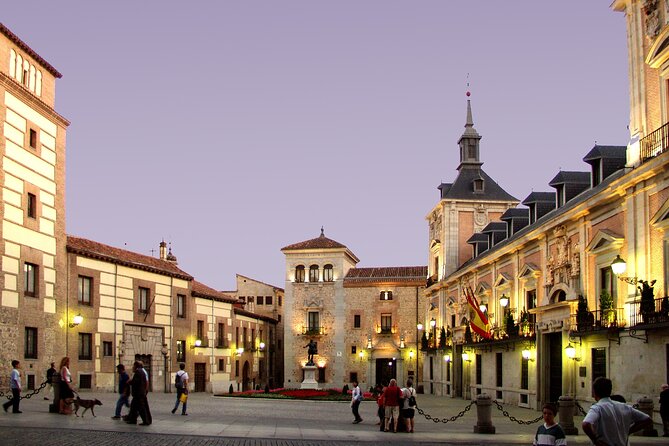
- San Isidro, the patron saint of Madrid, played a significant role in shaping the city’s medieval architecture.
- Madrid’s medieval layout is a blend of Moorish and Christian influences, characterized by narrow streets and tightly packed houses.
- Preservation efforts have been made to protect and restore the historical treasures of Madrid’s medieval layout.
- San Isidro’s influence can still be seen in modern Madrid, as the city integrates the medieval streets into its urban fabric and incorporates traditional architectural elements inspired by him.
Historical Background of San Isidro
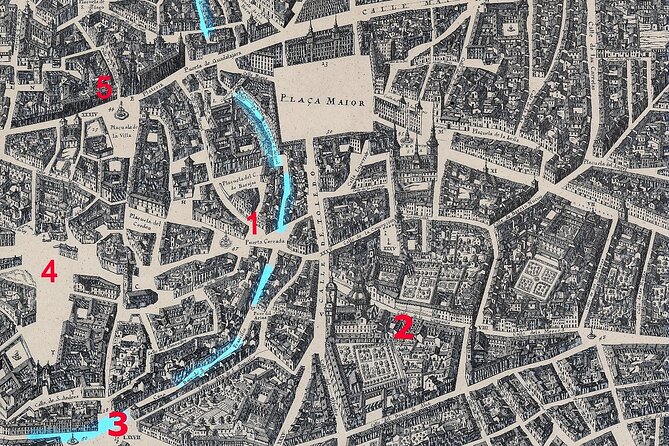
San Isidro, a historical figure in Madrid’s history, is widely revered as the patron saint of the city. His historical significance and cultural impact are deeply rooted in the traditions and customs of the people of Madrid.
San Isidro, also known as Isidore the Laborer, was born in the late 11th century and lived a simple life as a farmer. He’s known for his devotion to his faith, his humble nature, and his miracles. His connection to Madrid stems from the fact that he worked as a farm laborer in the outskirts of the city.
San Isidro’s life and teachings continue to inspire and influence the people of Madrid, making him an integral part of the city’s historical and cultural fabric.
Find more activities and experiences we've covered in Madrid.
Origins of Madrid’s Medieval Layout
The historical background of San Isidro sets the stage for understanding the origins of Madrid’s medieval layout, revealing the fascinating evolution of the city’s architectural design and urban development.
San Isidro, the patron saint of Madrid, holds great religious significance for the city.
The impact of Moorish rule on medieval Madrid is evident in its layout, as the Moors introduced a unique architectural style characterized by narrow, winding streets and tightly packed houses. This influence can still be seen in the narrow alleys and intricate maze-like layout of the city’s old town, known as the Madrid de los Austrias.
The medieval layout of Madrid reflects a combination of Moorish and Christian influences, creating a cityscape that’s both charming and rich in history.
Key Features of the Medieval Layout
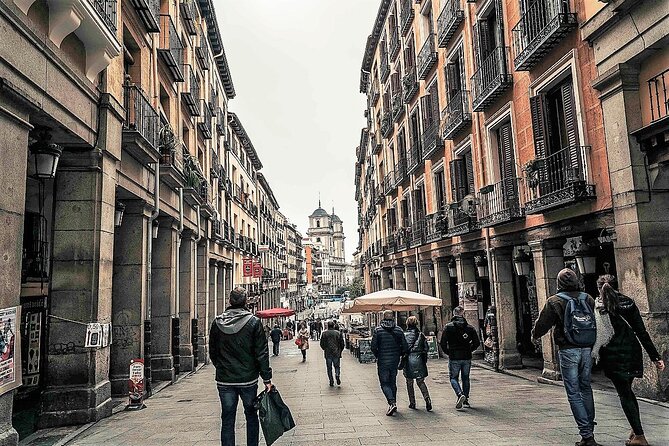
With its narrow alleys, intricate maze-like layout, and a charming combination of Moorish and Christian influences, the medieval layout of Madrid beckons visitors to explore its rich history and architectural beauty. One of the key features of this layout is its historical significance.
The medieval streets and buildings bear witness to the city’s origins and the various civilizations that have shaped its development over the centuries. From the remains of ancient walls to the majestic churches and palaces, every corner of the medieval layout tells a story.
In recent years, preservation efforts have been made to protect and restore these historical treasures. The City of Madrid, along with various organizations and individuals, have worked tirelessly to safeguard the medieval layout and ensure that future generations can continue to appreciate its beauty and historical importance.
San Isidro’s Role in Shaping Madrid’s Medieval Architecture
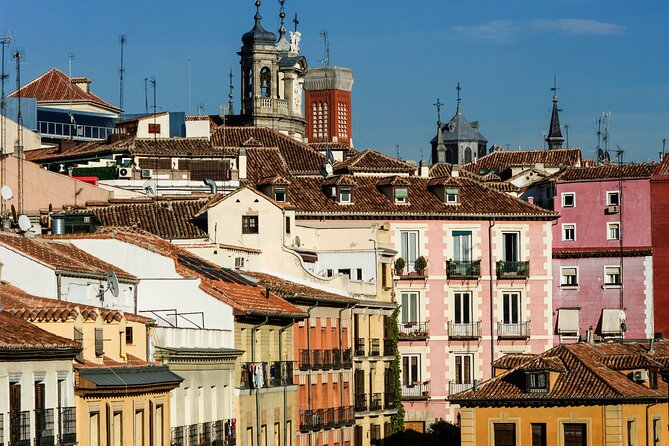
As visitors explore Madrid’s medieval layout and marvel at its historical significance, one can’t overlook the pivotal role that San Isidro played in shaping the city’s captivating architecture.
San Isidro, the patron saint of Madrid, had a profound impact on the city’s medieval architecture, leaving behind a legacy that’s still evident today.
The cultural significance of San Isidro can be seen in the numerous churches and religious structures that were built in his honor. These architectural marvels, such as the Church of San Isidro and the Basilica of San Francisco el Grande, showcase the rich artistic and architectural heritage of the medieval period.
San Isidro’s influence extended beyond religious buildings, as he also inspired the construction of palaces, mansions, and other grand structures that adorned the city’s streets.
The architectural legacy of San Isidro is a testament to the enduring cultural significance of this revered saint in the history of Madrid.
The Influence of San Isidro on Modern Madrid
San Isidro’s enduring influence can be seen in the vibrant and modern cityscape of Madrid today. The impact of San Isidro on modern urban planning is evident in the preservation of the city’s medieval heritage. One of the key ways in which this influence is manifested is through the layout of the city. Madrid’s medieval streets, which radiate out from the Plaza Mayor, have been preserved and integrated into the modern urban fabric. This blending of old and new creates a unique atmosphere that is characteristic of the city. Plus, San Isidro’s influence can be seen in the architectural elements that have been incorporated into modern buildings, such as the use of traditional materials and decorative motifs. Overall, San Isidro has played a crucial role in preserving Madrid’s rich history while also shaping its modern identity.
| San Isidro’s Impact on Modern Urban Planning | Preserving San Isidro’s Medieval Heritage |
|---|---|
| Layout of medieval streets | Integration of old and new |
| Preservation of architectural elements | Blending of traditional and modern |
Exploring San Isidro’s Medieval Streets and Squares
Exploring the labyrinthine streets and charming squares of medieval Madrid is like stepping back in time to a world of cobblestone pathways, hidden courtyards, and architectural gems.
San Isidro, with its rich history and cultural significance, offers visitors a glimpse into the city’s medieval past. As one walks through the narrow alleys, they can imagine the bustling markets and lively medieval festivals that once took place here.
The preservation efforts in San Isidro have been commendable, ensuring that the charming character of the neighborhood remains intact. From the well-preserved facades of the buildings to the quaint squares adorned with fountains and statues, every corner of San Isidro tells a story.
It’s truly a delight to wander through these streets and squares, immersing oneself in the medieval charm of Madrid.
Uncovering Hidden Gems in San Isidro’s Medieval District
Nestled within the enchanting labyrinth of medieval Madrid, the district of San Isidro unveils a treasure trove of hidden gems waiting to be discovered.
As visitors wander through the winding streets and alleys, they’ll stumble upon an architectural heritage that tells the story of a bygone era. From charming courtyards adorned with colorful tiles to majestic churches with intricate details, these hidden gems offer a glimpse into the rich history of the district.
One such gem is the Church of San Isidro, with its stunning Baroque facade and ornate interior. Another hidden treasure is the Arab Wall, a remnant of the city’s medieval fortifications.
These hidden gems are a testament to the enduring beauty and significance of San Isidro’s medieval district.
Common Questions
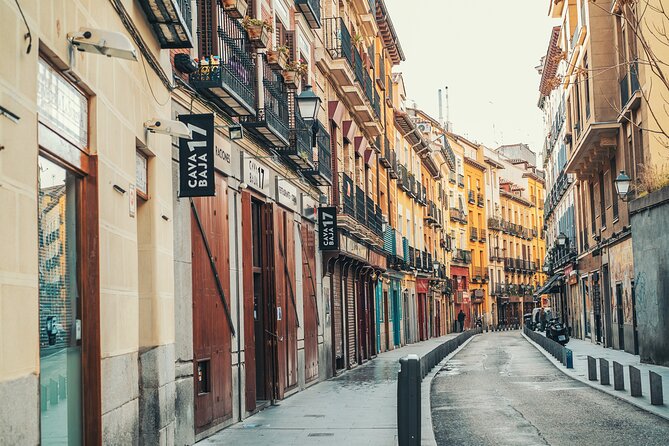
How Can I Book a Tour of San Isidro’s Medieval District?
To book a tour of San Isidro’s medieval district, simply follow the easy booking process. Discover the historical significance of this charming area as a knowledgeable guide takes you on a fascinating journey through time.
What Is the Duration of the Tour of San Isidro’s Medieval District?
The duration of the tour of San Isidro’s medieval district is approximately two hours. Visitors will explore the highlights of this historic area, including ancient churches, narrow streets, and the iconic San Isidro Cathedral.
Are There Any Age Restrictions for the Tour of San Isidro’s Medieval District?
There are no age restrictions for this tour. It is suitable for all ages. As for wheelchair accessibility, it is recommended to contact Viator’s Help Center for further information and assistance.
Can I Bring My Own Headphones for the Wireless Listening System?
Yes, you can bring your own headphones for the wireless listening system. The personal headphones should be compatible with the system to ensure a seamless experience during the tour.
Is the Tour of San Isidro’s Medieval District Wheelchair Accessible?
Yes, the tour of San Isidro’s medieval district is wheelchair accessible. Visitors can explore the historical significance of the area while ensuring that everyone can participate and enjoy the experience.
The Sum Up
To sum it up, San Isidro and the Medieval Layout of Madrid is a captivating article that takes readers on a journey through the rich history and architectural heritage of the city.
With its ancient churches, historic squares, and charming courtyards, San Isidro offers a glimpse into the past and showcases the enduring beauty of Madrid.
This must-read article deepens one’s appreciation for the city’s cultural influences and sheds light on the evolution of its distinctive medieval character.
More Tour Reviews in Madrid
Looking for something different? Other Madrid activities we've written about
- Madrid VIP City tour and Prado Museum, pick up & tickets included
- 8 Days Tour Madrid to Andalusia
- Small Group Prado Museum Tour with Skip the Line
- Private 8-hour City Tour of Madrid with driver,guide with pick up
- Craft-Beer and Tapas Tour in Madrid
- Cordoba Day Trip from Madrid by Train
- Madrid City Wine Tour and Pairing
- Tuk Tuk Tour 120 mins + Baked Potato + Limonade
- Madrid Food Tasting Tour of Hidden Gems (Small Groups)
- New! Madrid: Not Just Another Tapas & Wine Tour by Eating Europe
- Madrid Tapas & Taverns Small Group Food & History Tour
- De Tapas in Malasaña: Evening Wine and Tapas Tour
